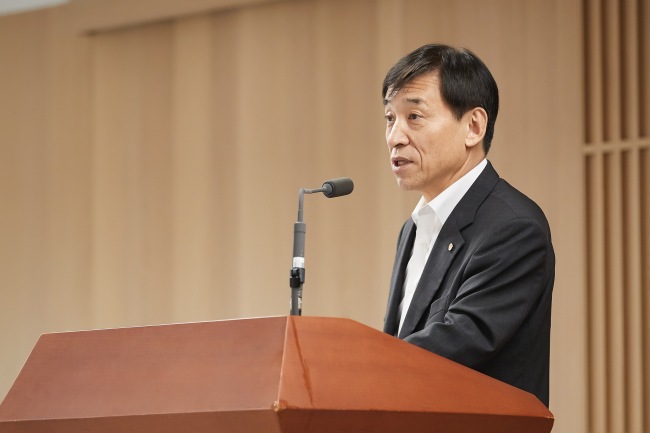More households will face default risk with market rate hikes: BOK
By Korea HeraldPublished : June 22, 2017 - 17:09
South Korea’s central bank on Thursday warned that the number of highly-indebted households at default risk could go even higher with interest rates in the financial market likely to rise in coming years.
In a bi-annual financial stability report submitted to the National Assembly, the Bank of Korea said households’ debt-to-disposable income rose to 153.3 percent as of the end of March, up 8.6 percentage points from a year earlier.
The BOK projected that a market interest rise by up to 1.5 percentage point will lead to the increase of the number of households at default risk by 60,000 in 2017 compared to 2016, while the number of such vulnerable households stood at 315,000, or 2.9 percent of total households with loans at the end of 2016.
“If lending rates quickly rise, the number of households at default risk and their amount of debt will greatly increase, making them more vulnerable,” the report said.
The warning came as the US Federal Reserve raised its key interest rate by 0.25 percentage point to 1-1.25 percent range, a similar level of the BOK’s record low 1.25 percent base rate.
With the Fed planning to raise the rate at least once more this year and to gradually reduce its securities holdings, the global financial markets including that of Korea are expecting an overall rise of market interest rates in the coming years.
In a bi-annual financial stability report submitted to the National Assembly, the Bank of Korea said households’ debt-to-disposable income rose to 153.3 percent as of the end of March, up 8.6 percentage points from a year earlier.
The BOK projected that a market interest rise by up to 1.5 percentage point will lead to the increase of the number of households at default risk by 60,000 in 2017 compared to 2016, while the number of such vulnerable households stood at 315,000, or 2.9 percent of total households with loans at the end of 2016.
“If lending rates quickly rise, the number of households at default risk and their amount of debt will greatly increase, making them more vulnerable,” the report said.
The warning came as the US Federal Reserve raised its key interest rate by 0.25 percentage point to 1-1.25 percent range, a similar level of the BOK’s record low 1.25 percent base rate.
With the Fed planning to raise the rate at least once more this year and to gradually reduce its securities holdings, the global financial markets including that of Korea are expecting an overall rise of market interest rates in the coming years.

At a press luncheon, BOK Governor Lee Ju-yeol said the Fed’s move to reduce its asset holdings will be “unprecedented,” and that the bank will prudently monitor whether it would have a negative impact on the local financial markets.
Higher US interest rates put the BOK under heavier pressure on its rate-setting decision, with foreign investors possibly moving their funds out of Korea to the higher-yielding US markets in case the Fed’s rate is higher than that of the BOK.
Lee brushed off concerns over a looming absence of the new member of the BOK’s monetary policy committee in the upcoming rate-setting meeting on July 13.
Jang Byung-wha, senior deputy governor at the BOK and a member of the bank’s seven-member board, is to finish his three-year term as board member Saturday this week.
Jang’s absence brings the number of BOK board members to six, without a tie-breaking vote.
“There is no risk factor even when six members make a rate decision, because the current board members do not have different views on assessing the economy and on the BOK’s monetary policy,” Lee said.
“As for the naming of the new monetary policy committee member, all I can say is that it is in progress.”
The deputy governor is appointed by the president, based on the recommendation by the BOK governor. Lee has not announced his recommendation yet.
While the BOK is expected to lift the 2017 growth outlook from the previous projection of 2.6 percent in July due to robust exports and construction investment, Lee cautioned over downside risks pressuring the Korean economy as well.
“We have to look if there is any factor that will hurt exports such as a change in trade environment with China and the US. We also should monitor volatility in oil prices,” he said.
By Kim Yoon-mi (yoonmi@heraldcorp.com)
-
Articles by Korea Herald








![[KH Explains] How should Korea adjust its trade defenses against Chinese EVs?](http://res.heraldm.com/phpwas/restmb_idxmake.php?idx=644&simg=/content/image/2024/04/15/20240415050562_0.jpg&u=20240415144419)











![[Today’s K-pop] Stray Kids to return soon: report](http://res.heraldm.com/phpwas/restmb_idxmake.php?idx=642&simg=/content/image/2024/04/16/20240416050713_0.jpg&u=)